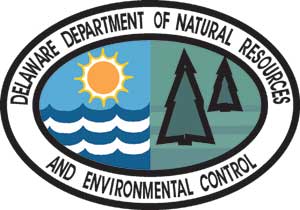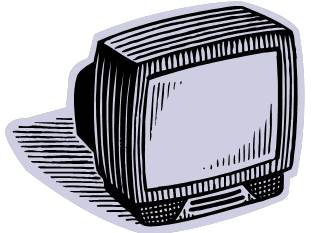When you look around your facility it’s important for you to know when you are looking at a product – and therefore not subject to RCRA – and when you are looking at a waste – and therefore subject to RCRA. Unfortunately, not everything comes with a label reading, “Waste for Disposal” or “Product to be Used”. But as the generator of any solid waste you are responsible to make this determination and be able to defend it to a State or Federal inspector. Let’s say for example that during an on-site inspection an inspector for the USEPA’s hazardous waste enforcement division looks in one of your storage areas and proclaims, “those old drums of solvent over there look like waste to me.” “They’re not,” you retort and then quickly add, “As a matter of fact we hope to put those solvents into use sometime soon.” Right there you’ve got a problem on your hands and the challenge before you is to convince the inspector that the drums of solvent you are both looking at are not a waste but rather are a valuable product. How are you going to do that? Below are some questions you should ask yourself about the “products” you see throughout your facility. The answers to these questions will help you to determine if what you see is a product or a waste. Source: Missouri Department of Natural Resources guidance. (more…)
What is a Product and What is a Waste?

Royal Farms Store in Dover, DE Issued RCRA Violation for not Conducting a Hazardous Waste Determination
The Bullet:
A Dover, DE store in the Royal Farms chain was issued a violation by the Delaware Department of Natural Resources and Environmental Control for a simple – but common – violation of the State’s hazardous waste regulations.
Contact me with any questions you may have about the transportation of hazardous materials by air, highway, vessel, or rail International and Domestic Daniels Training Services 815.821.1550 |
Who:
Royal Farms Store #139 of the Royal Farms chain of retail stores.
Delaware Department of Natural Resources and Environmental Control (DNREC). DNREC Contact: William Davis
What:
As a generator of a solid waste, the store failed in its responsibility under both Federal and State regulations to conduct, and document, a hazardous waste determination.
Where:
Royal Farms Store #139 6 West Lebanon Road Dover, DE 19901When:
Date Discovered: 05/02/2014
Enforcement Action Served Date: 07/22/2014
Date Corrected: 08/21/2014
Why:
A person that discards any material generates a solid waste. Unless that person is exempt from regulation under the Resource Conservation and Recovery Act (RCRA) – and this store clearly is not – they must conduct a hazardous waste determination. This determination must be documented (no format is specified) and a record kept for at least three years from the last date the waste was shipped off-site for treatment, disposal, or recycling.
How:
The state of Delaware – like most other states – has an authorized hazardous waste program which requires it to enforce the RCRA regulations within its borders. A state that does not enforce its regulations stands to loose its authorization to manage its own hazardous waste program.
Conclusion:
A person can be forgiven of thinking that the hazardous waste regulations of RCRA apply only to large industries, utilities, landfills, and the like. It can be surprising to learn that a local retail store is subject to the same regulations. First and foremost among the RCRA regulations is to conduct a hazardous waste determination. From that, a solid waste generator can determine what status of hazardous waste generator they are, and what regulations apply to the cradle-to-grave management of their hazardous waste.
Not sure of your hazardous waste generator status? |
Don’t wait for a Notice of Violation from your state to learn you are subject to the regulations. Contact me and I can assist you with the hazardous waste determination and any training you may require as well.
40 CFR 261.4(b)(7) – The Mining Waste Exclusion from Regulation as a Hazardous Waste
[slideshare id=37164196&doc=40cfr261-140720001035-phpapp02]
The RCRA Exclusion for Kraft Mill Steam Stripper Condensates at 40 CFR 261.4(a)(15)
[slideshare id=36646302&doc=40cfr261-140704233456-phpapp02]

USEPA Revises Regulations Regarding the Export of CRTs
On June 18, 2014 the USEPA made revisions to its regulations regarding the export of Cathode Ray Tubes (CRTs). Those persons involved in the export of CRTs for reuse or recycling – eg. electronic collectors and recyclers – must review these revised regulations to ensure compliance.

A cathode ray tube (CRT) is the glass video display component of an electronic device (usually a computer or television monitor). CRT funnel glass generally contains high enough concentrations of lead that the glass is regulated as hazardous waste when disposed. | |
In an earlier revision (2006) to the regulations of the Resource Conservation and Recovery Act (RCRA) the USEPA created an exclusion from regulation as a solid waste for CRTs if certain conditions are met (review the RCRA Exclusion From Regulation for CRTs at 40 CFR 261.4(a)(22)). This June 18, 2014 publication is a revision to the export requirements for those regulations.
Specifically, the rule:
(1) Adds a definition of “CRT exporter” to eliminate potential confusion over who is responsible for fulfilling CRT exporter duties, including submitting the export notices.
(2) Requires information on all interim and final destinations for CRTs exported for recycling to provide more complete information to receiving countries.
(3) Requires annual reports from exporters of used CRTs sent for recycling to provide EPA more accurate information on the total quantity of CRTs exported for recycling during a calendar year.
(4) Replaces the one-time notice for used CRTs exported for reuse with an expanded, periodic notice to improve tracking, and thus better management, of these CRTs.
(5) Requires that normal business records maintained by exporters of used CRTs for reuse be translated into English upon request.
Refer to the USEPA Webpage for Cathode Ray Tube (CRT) Regulations for more information.
Use caution when selecting your CRT recycler:
Cathode Ray Tube Recycler Fined by AZ DEQ
Criminal Penalties for CRT Recycler
Criminal Penalties for Michigan CRT Recycler
Without the use of the above referenced RCRA exclusion, your CRTs may be required to be managed as a hazardous waste. The knowledge of this exclusion – and others, see below – is critical for anyone who generates a hazardous waste or – as in the case of CRTs – generates something that could be a hazardous waste.
Daniels Training Services 815.821.1550 |
Please contact me for a free RCRA Training consultation or any questions you may have about the hazardous waste regulations of the USEPA.
The Agriculture Waste Exclusion 40 CFR 261.4(b)(2)
[slideshare id=32271821&doc=40cfr261-140313085601-phpapp02]
Conditional Exclusion for Carbon Dioxide (CO2) Streams in Geologic Sequestration Activities

A Final Rule published in the Federal Register informs the regulated community that the USEPA will revise its regulations of the Hazardous Waste Management System under the Resource Conservation and Recovery Act (RCRA) to add a conditional exclusion from the definition of hazardous waste for carbon dioxide (CO2) streams that are hazardous.
Proposed Rule Published: August 8, 2011
Final Rule Published: January 3, 2014
Hazardous Waste Management System: Conditional Exclusion for Carbon Dioxide (CO2) Pages 350 – 364 [FR DOC # 2013-31246] PDF | Text | More
Effective Date: March 4, 2014 (more…)
State Certified Labs for the Hazardous Waste Determination
Conducting a hazardous waste determination is a requirement for all persons that generate a solid waste, learn more: The Hazardous Waste Determination. The determination may be based on either or both of the following methods: Process Knowledge or Analysis. The regulations of the USEPA do not indicate which of these methods is preferred, however, many states with an authorized hazardous waste program will specify that they prefer (aka: require) the hazardous waste determination to rely on the analysis of a representative sample of the waste whenever that is possible. Some states will require that the lab used to conduct the analysis be a state approved or state certified lab in order for the results to be acceptable while others have no such requirement.
It is your responsibility as a generator of any waste, particularly a hazardous waste, to ensure the lab you use to determine the hazardous waste characteristics of your waste (eg. Ignitable, Corrosive, Reactive, or Toxic) complies with the following:
- Maintain its NVLAP accreditation. Read here the difference between “certification” and “accreditation”.
- Use the USEPA approved test methods.
- Maintain its approval/certification with a state’s environmental regulatory agency (if applicable).
The following is an attempt to tabulate the lab certification or approval requirements of the 50 states and provide a link to each state’s list of approve labs, if applicable. This list will be updated as the requirements of each state become known to me. Please don’t hesitate to contact me with information about your state if you wish to see it added to this list.
And finally, this information is correct to the best of my ability and knowledge. I make no guarantee of its correctness or completeness. Be sure to check with the requirements of your state to ensure compliance. (more…)
40 CFR 261.4(b)(6) – the RCRA Exclusion From Hazardous Waste for Trivalent Chromium Waste
[slideshare id=29698624&doc=40cfr261-140104225527-phpapp02]
40 CFR 261.4(a)(1) – The RCRA Exclusion for Domestic Sewage
[slideshare id=14208991&doc=40cfr261-4a1-120907194342-phpapp02]
